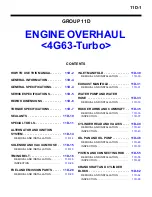
32
During each disassembly of motor, we recommend installation of new shaft seals and seals securing
the protection index of the motor. Recommended relubrication intervals, quantity and type are
indicated on each motor’s additional nameplate. It is important to be aware of the fact that the
recommended intervals given on this nameplate are based on average use. If the motor operates
under conditions of severe dirt, corrosion, abrasive dust, heavy shock loads and/or vibration the
relubrication intervals should be at least halved or even less depending on the severity of these
conditions. In case of vertical installation of the motor, relubrication intervals should be halved.
When using inverter feeding the indicated relubrication periods are reduced by 25% because of the
higher temperature increase. If during operation of the motor via an inverter the nominal speed is
exceeded then the regreasing period reduces approximately in the opposite ratio to the increase in
the motor speed.
Also note that over-lubricating the bearings can cause excessive bearing temperatures, premature
lubrication breakdown and bearing failure. When relubricating, operate the motor for 15 minutes with
grease plug removed. This allows excess grease to purge.
In case of prolonged perionds of standstill, turn the shaft several revolutions at least once every two to
three months to prevent bearing demage.In case of standstill longer than two years, it is needed to
completely change graease in bearings.
•
• Maintenance work (except for lubricant) may be carried out only when the machine
is idle.
• Ensure that the machine can not be independently switched on and it should be an
appropriate note on the machine.
• Adjacent live parts must be covered!
• Ensure that the auxiliary circuits or. heat at idle power.
10 DUST PROTECTION
For dust explosion-protected motors the dust explosion protection is depending very much on the
local environmental conditions. The motor must be cleaned from deposited dust and other
contaminants in regular intervals (depending on conditions), especially the entry openings and air
passages of the cooling system as to ensure sufficient air flow to properly cool the motor during
operation. (Check for accumulated dust between the ribs under the protective cover and clean as
needed)
Thick layers of dust will result in a temperature rise on the surface of the motor due to
thermal insulation. Layers of dust on the motors or even the total coverage should be
avoided as far as possible by suitable installation and constant maintenance.
The indicated surface temperature of the motor is only valid, if the dust layer on the motor is max. 5
mm. The securing of these conditions (dust type, maximum layer thickness and other) has to be
assured. The motor shall not be opened before a suitable time has passed to reduce the inner
temperatures to values that are not ignitable. If the motors have to be opened for maintenance or
repair, the work has to be done in a dust-free room if possible. If this is not possible suitable
measures have to be taken to prohibit that dust can collect inside of the enclosure. At disassembly
take extra care that the sealing parts like sealing, end faces and other are not damaged.
Painting and impregnation after repair or maintenance work.
After repainting of explosion-
protected motors or after impregnation of a complete stator that has been rewinded, bigger layers of
paint or resin can be found on the surface of the motors. (This can result in electrostatic charges with
risk of explosion during discharge). Nearby charging processes can also result in electrostatic charge
of complete surfaces or parts of the surface. There is the risk of explosion due to discharge. Therefore
the requirements according to IEC/EN 60079-0:
Equipment – General requirements must be
observed under all circumstances: Limitation of the total thickness of paint or insulation layer
depending on the individual explosion group: IIC: Total layer thickness
≤
0,2 mm
















































